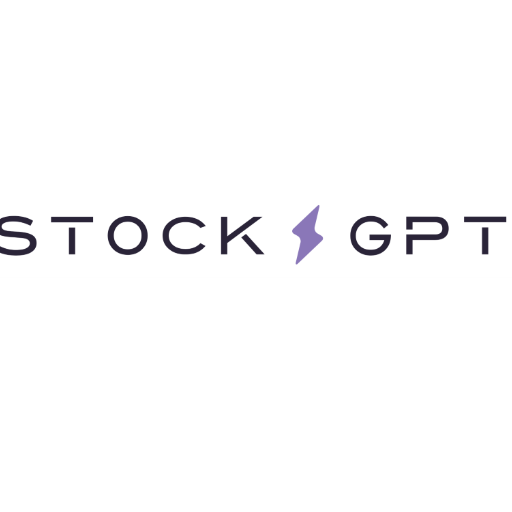Indian Stock Market-stock market analysis tool
AI-powered insights for smarter investing
How is the Nifty 50 performing today?
Give me an analysis of Infosys stock over the last 5 years.
What are the top performing sectors in the Indian stock market currently?
How did the Indian stock market react to the latest budget announcement?
Related Tools
Load More
Stock-GPT: Stock Price & Market Insights
Welcome to Stock-GPT, a novel gateway to gain stock market insights by combining ChatGPT models with accurate, comprehensive historical and near real-time market data. Access all major equities, ETFs, and crypto.

Stock Market Analyzer (Premium)
I do offer comprehensive market analysis, including graph analysis, trends, and news. I analyze recent data, gather research from the web, and answer your questions ❤️💲💰

Market Analyst
Analyzes specific stocks and suggests options strategies.

Stock Technicals
Check Technicals of Stocks to invest

Nifty Strategist - India Stock Market Assistant
Expert advisor for Indian stock market, specializing in BSE and NSE stock exchange analysis.

Stock Analysis
I look into the current state of publicly traded companies and report their performance.
20.0 / 5 (200 votes)
Introduction to the Indian Stock Market
The Indian Stock Market, comprised primarily of the Bombay Stock Exchange (BSE) and the National Stock Exchange (NSE), serves as a platform for trading shares of public companies. It facilitates capital raising for businesses and offers investment opportunities for individuals and institutions. The BSE is one of the oldest stock exchanges in Asia, established in 1875, while the NSE, established in 1992, is known for its sophisticated electronic trading system. An example of its function is a company like Reliance Industries issuing shares to the public to raise capital for expansion. Investors can buy these shares through the NSE or BSE, expecting to earn returns from dividends and capital appreciation.

Main Functions of the Indian Stock Market
Capital Raising for Companies
Example
A company issues an Initial Public Offering (IPO)
Scenario
When Zomato decided to go public in 2021, it issued an IPO through the NSE, raising significant capital to fund its expansion plans.
Wealth Creation for Investors
Example
Investors buying shares of growing companies
Scenario
An investor buys shares of TCS at INR 1,000 and sells them years later at INR 3,000, thus benefiting from the capital appreciation.
Market Liquidity
Example
Daily trading of shares
Scenario
Shares of companies like Infosys are traded daily, ensuring that investors can easily buy or sell their holdings without significantly impacting the share price.
Ideal Users of the Indian Stock Market
Individual Investors
These are retail investors looking to grow their wealth over time by investing in stocks. They benefit from potential dividends and capital appreciation. For example, a salaried employee investing in mutual funds or directly in stocks to save for retirement.
Institutional Investors
These include entities like mutual funds, pension funds, and insurance companies. They engage in large-scale trading and significantly influence the market. For instance, a mutual fund manager buying large quantities of shares to build a diversified portfolio for clients.

Guidelines to Use Indian Stock Market Tool
Step 1
Visit aichatonline.org for a free trial without login, also no need for ChatGPT Plus.
Step 2
Familiarize yourself with the interface, exploring various sections such as market trends, stock analyses, and economic policies.
Step 3
Use the search function to look up specific stocks or indices, and access detailed statistical analyses and historical data.
Step 4
Take advantage of the visual tools available, such as candlestick pattern visualizations and trend charts, for better insights.
Step 5
Regularly check the updates and news sections to stay informed about the latest market developments and policy changes.
Try other advanced and practical GPTs
Storyteller Wesley
AI-powered storytelling for engaging content

League of Legends Challenger Coach V3.0
AI-powered personalized LoL coaching

LoL pentakill - the BEST League of Legends AI 2024
AI-powered League of Legends assistant

Stock 🌟
AI-Powered Stock News Insights

Investment Banking &Private Equity Interview Coach
AI-Powered Coaching for Finance Interviews

Private Equity Managing Director
AI-powered private equity insights

Indian Cuisine Helper
Discover the magic of Indian cuisine with AI

Eduverse Summit Promoter
AI-powered summit management for education leaders

Market Research Assistant
AI-Powered Market Research Insights

IT-Security & Data Protection
AI-powered IT security and compliance monitoring

Expert Panel v2.0
AI-powered multi-expert discussions for all.

Albert Einstein's Debate Panel
AI-powered debates, moderated by Einstein.

- Trend Analysis
- Educational Resources
- Stock Insights
- Market Updates
- Economic Policies
Detailed Q&A about Indian Stock Market Tool
What kind of data does the Indian Stock Market tool provide?
The tool offers comprehensive data including real-time stock prices, historical data, market trends, and economic policy updates, with detailed statistical analyses for Nifty, Sensex, and individual stocks.
How can I analyze market trends using this tool?
You can analyze market trends by exploring the trend charts and visual tools available. These include detailed graphs, candlestick patterns, and statistical summaries that help in understanding market movements and making informed decisions.
Is the tool suitable for beginners in stock market investment?
Yes, the tool is user-friendly and provides clear, detailed information that is accessible even for beginners. It offers tutorials and insights to help new investors understand the market and make informed decisions.
Can I get updates on market holidays and economic policies?
Absolutely. The tool includes a dedicated section for market holidays and provides timely updates on economic policies, ensuring you stay informed about key dates and regulatory changes affecting the market.
Does the tool offer any educational resources?
Yes, it offers educational resources such as tutorials on candlestick patterns, trend analysis, and market fundamentals, helping users enhance their knowledge and investment strategies.